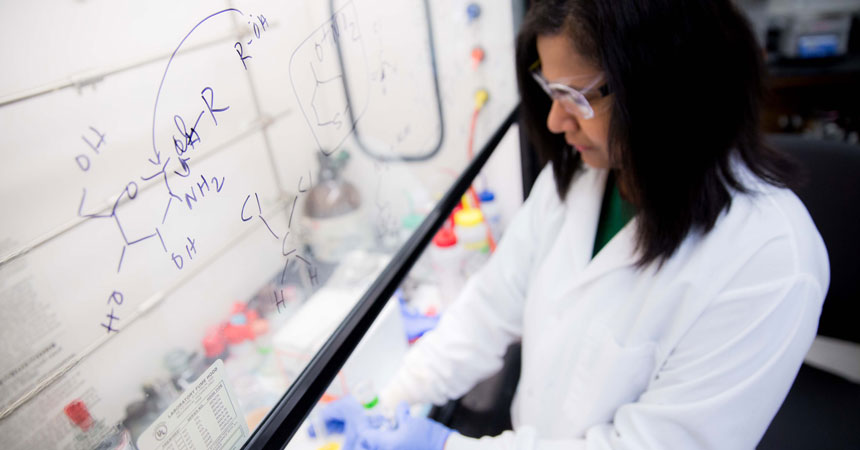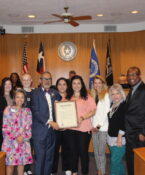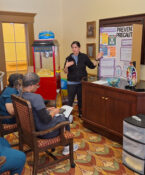A glaucoma treatment that skips the poke in the eye
By Jan Jarvis

One of the ways researchers are exploring treating the optic nerve damage of glaucoma is an injection directly into the eye.
But Suchismita Acharya, PhD, is studying a different approach that not only takes the pain out of treating this blinding disease but also holds the promise of curing it.
HSC InsiderLearn more about UNTHSC’s people and programs by signing up for the weekly HSC Insider email. |
“Wouldn’t an eye drop be so much better?” she said. “Who likes getting poked into the eye?”
Dr. Acharya, a Research Assistant Professor in Pharmacology & Neuroscience and the North Texas Eye Research Institute, is working on a small molecule that can treat glaucoma by simultaneously decreasing eye pressure and protecting neurons and retinal ganglion cells.
“Such a compound could lower pressure in the front of the eye and also reach the back of the eye to protect ganglion cells,” she said. “This could be a cure for glaucoma.”
Her lab has designed and synthesized a unique nanosuspension eye drop of the new hybrid molecule that can reach to the back of the eye. It can easily be manufactured and used to target glaucoma, Dr. Acharya said.
By 2020, more than 76 million people are estimated to be affected by glaucoma, which is associated with elevated eye pressure and progressive death of retinal ganglion cells.
Dr. Acharya said the unique design of the drug makes it possible to both decrease intraocular pressure and prevent retinal ganglion cell death.
BrightFocus Foundation has awarded a $150,000 research grant to Dr. Acharya to further explore this approach. The Maryland-based nonprofit organization supports scientific research for Alzheimer’s disease, glaucoma and macular degeneration.
“This grant will help me expand on this research study and allow me to apply for bigger grants to help in evaluating the drug in human eyes and ultimately develop an eye drop to treat glaucoma,” Dr. Acharya said.



![Uyen Sa Nguyen Scaled[58]](https://www.unthsc.edu/newsroom/wp-content/uploads/sites/16/Uyen-Sa-Nguyen-scaled58-145x175.jpg)

Social media